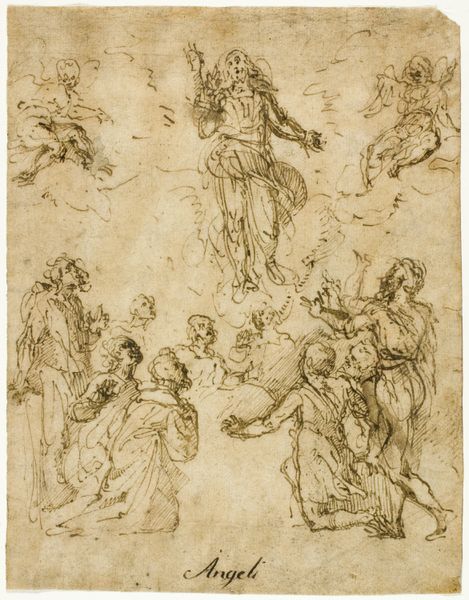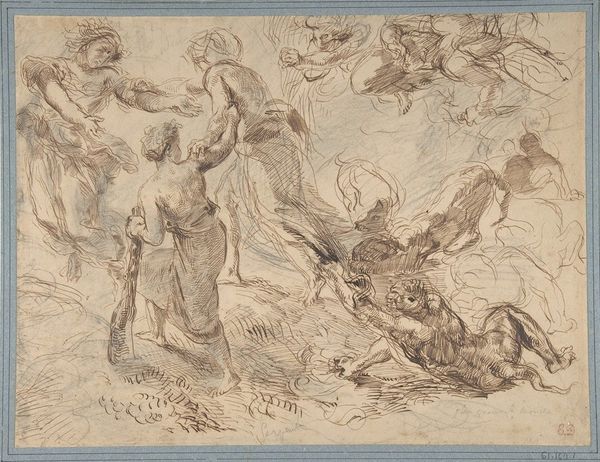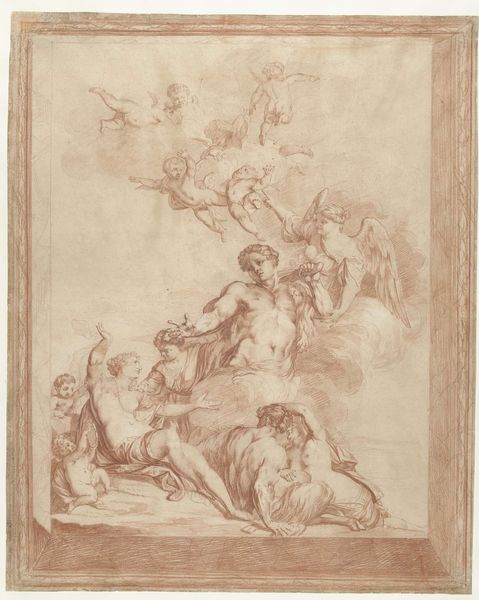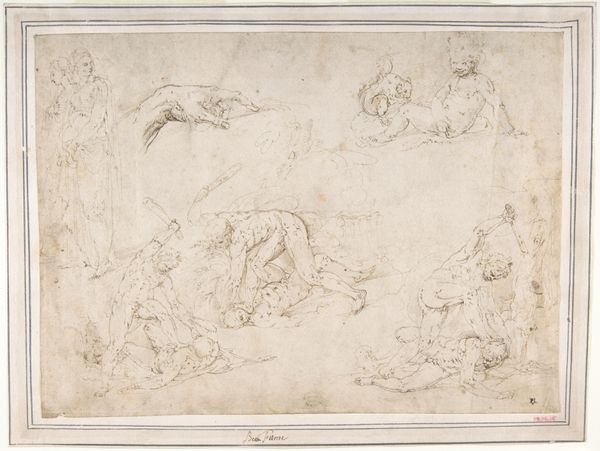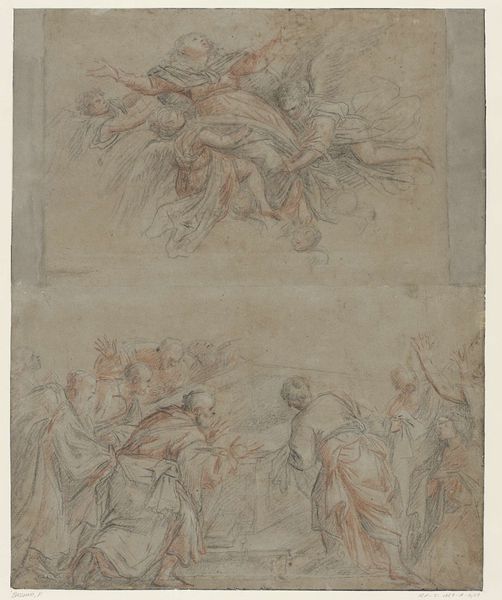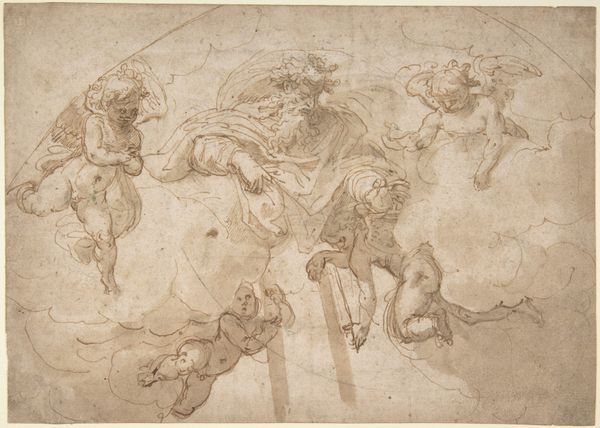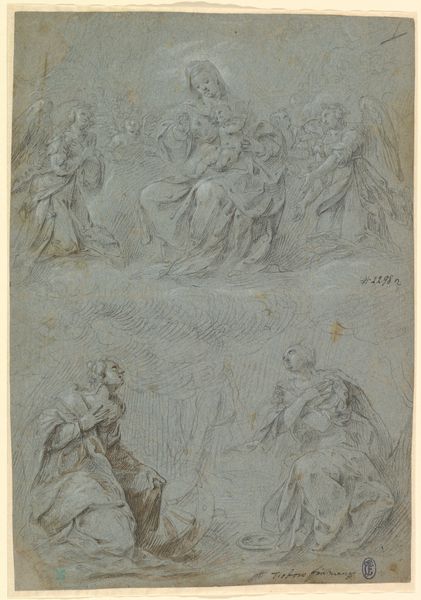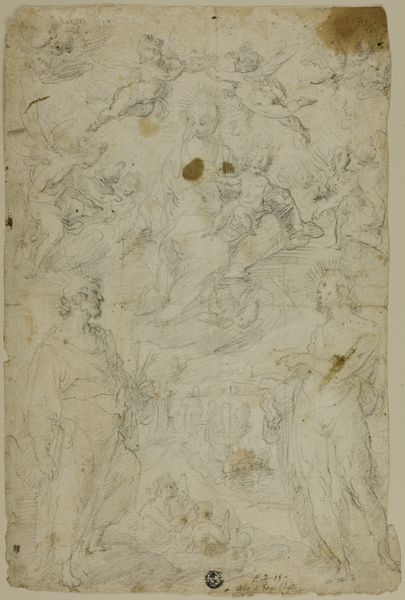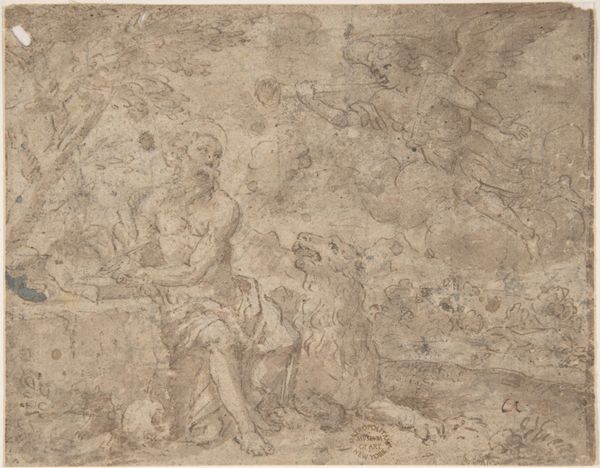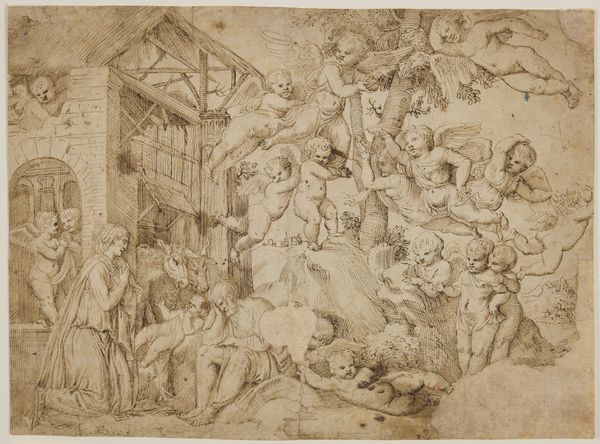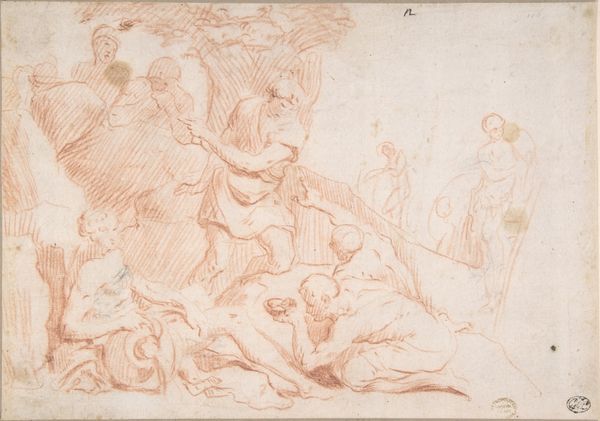
drawing, ink
drawing
ink painting
figuration
11_renaissance
ink
history-painting
italian-renaissance
virgin-mary
angel
Dimensions: 8 3/16 x 10 3/4in. (20.8 x 27.3cm)
Copyright: Public Domain
Curator: The delicate strokes of ink bring to life Francesco Vanni's "The Virgin Protectress of the City of Siena," dating back to 1588. Currently residing at the Metropolitan Museum of Art, it's a window into Renaissance devotion. What catches your eye? Editor: It’s ethereally loose! The figures almost float, with a quality that is… tentative, or more like a draft waiting for bolder colours. And is that Siena sketched way down at the bottom? There is a monk and a nun down there. The Virgin and angels almost overpower them! Curator: Precisely! Vanni employs that compositional contrast to highlight the Virgin's symbolic role as Siena's protector. The city's vulnerability, the human supplicants below—it all speaks to humanity's reliance on divine intervention. And the choice of ink underscores the work's function: a preparatory study, not the final statement. Editor: So this is like a doodle in the margins of something grander. I mean look at that ornate, vegetal corner piece-- like a forgotten ornament! That unfinished feeling actually humanizes the piece, gives it more heart than cold perfection ever could. Does it depict a historical moment of desperation for the city? Curator: Quite possibly. Siena faced numerous challenges during that era: political instability, plague, and famine were frequent woes. The Virgin, already central to Sienese identity, became an even more poignant symbol of hope. Consider, too, the carefully rendered halos above each figure. Circles of light were not just pious decoration but a symbol of celestial blessing, signifying the figures have God's favor! Editor: But these aren’t just any angels, though, are they? A little disturbing! These putti appear as little more than winged baby skulls offering a crown. That certainly reminds us how fleeting everything is! Are they common in artwork depicting Virgin Mary? Curator: Winged skulls certainly resonate with the "memento mori" tradition. This was actually fairly popular then: it acted as a solemn, thoughtful, symbolic reminder of mortality even amid divine portrayals. It could even act to make one humble before God, knowing one's earthly limits. Editor: It’s amazing to think this drawing gives you a window into not just religious sentiment but political desperation as well as psychological defense. Like a prayer caught in mid-breath. Curator: In truth, that’s the captivating tension of iconography, the layers upon layers! Each symbolic element whispering its history. Editor: Yeah, this sketch has now spoken volumes! Thanks for pointing that out.
Comments
No comments
Be the first to comment and join the conversation on the ultimate creative platform.
